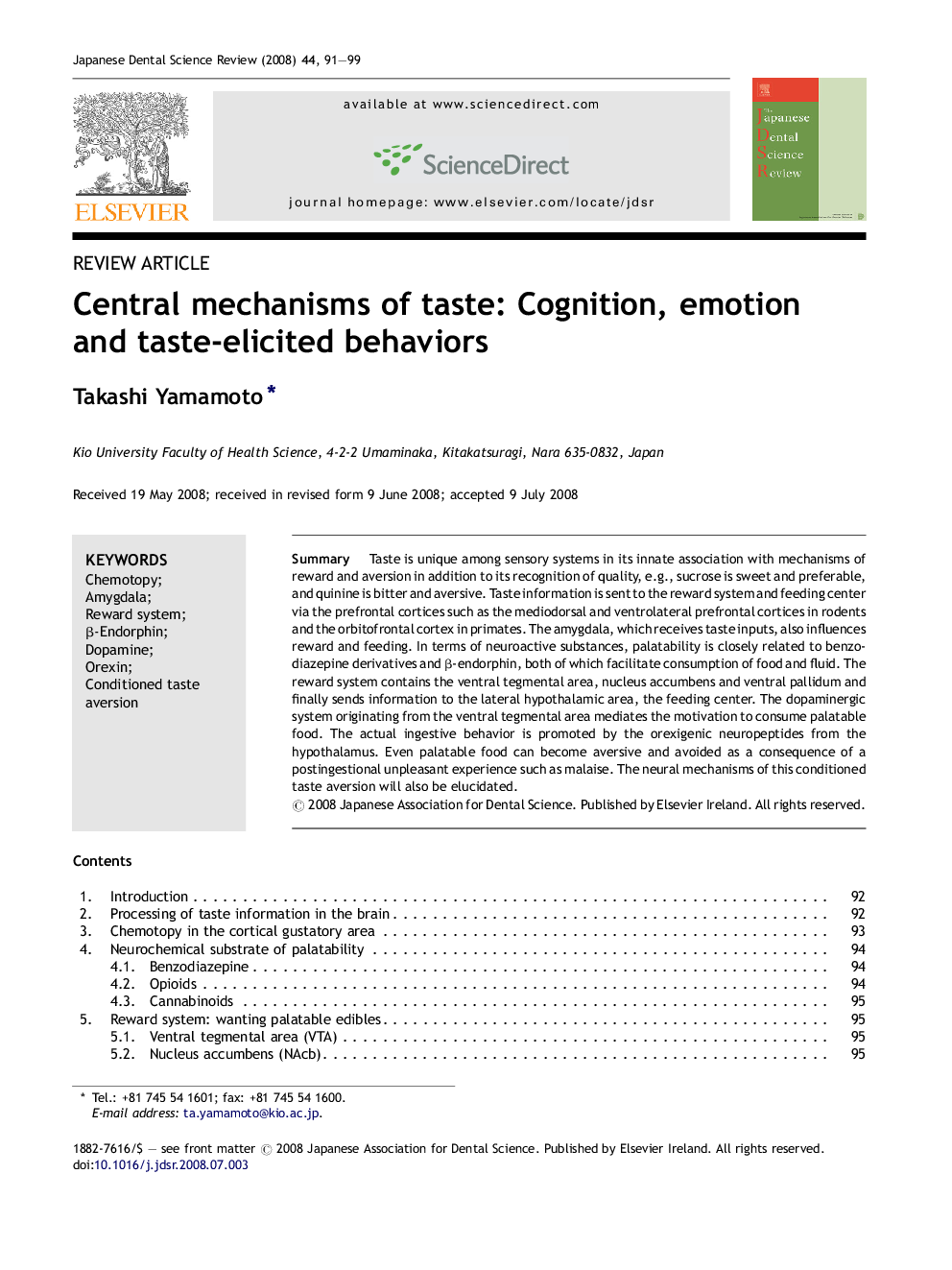| کد مقاله | کد نشریه | سال انتشار | مقاله انگلیسی | نسخه تمام متن |
|---|---|---|---|---|
| 3136239 | 1195460 | 2008 | 9 صفحه PDF | دانلود رایگان |

SummaryTaste is unique among sensory systems in its innate association with mechanisms of reward and aversion in addition to its recognition of quality, e.g., sucrose is sweet and preferable, and quinine is bitter and aversive. Taste information is sent to the reward system and feeding center via the prefrontal cortices such as the mediodorsal and ventrolateral prefrontal cortices in rodents and the orbitofrontal cortex in primates. The amygdala, which receives taste inputs, also influences reward and feeding. In terms of neuroactive substances, palatability is closely related to benzodiazepine derivatives and β-endorphin, both of which facilitate consumption of food and fluid. The reward system contains the ventral tegmental area, nucleus accumbens and ventral pallidum and finally sends information to the lateral hypothalamic area, the feeding center. The dopaminergic system originating from the ventral tegmental area mediates the motivation to consume palatable food. The actual ingestive behavior is promoted by the orexigenic neuropeptides from the hypothalamus. Even palatable food can become aversive and avoided as a consequence of a postingestional unpleasant experience such as malaise. The neural mechanisms of this conditioned taste aversion will also be elucidated.
Journal: Japanese Dental Science Review - Volume 44, Issue 2, October 2008, Pages 91–99